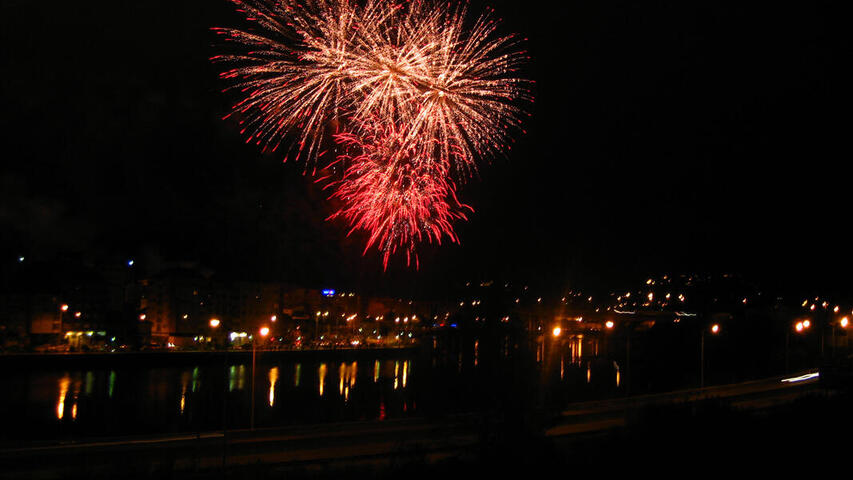Rías Baixas: Celebrations That Captivate the World
Nowhere else will you find so much life concentrated in such a small space. Here, recipes are passed down like treasured jewels, towns celebrate their history with grandeur, and the past comes alive in every festival. From wines that tell stories of hard work and the land, to rituals where nature and tradition meet without words.
In the Rías Baixas, each season brings its own spectacle: flower parades, symbolic battles, ancient scents, and flavors that leave a lasting impression. Come and let yourself be carried away by a land that truly knows how to celebrate its own.
In winter, Lalín transforms into the world capital of cocido. What began in 1968 as a single day dedicated to celebrating local gastronomy has evolved into an entire Month of Cocido. This town in the Deza region attracts tens of thousands of people who come to enjoy this traditional dish — a recipe that combines more than a dozen ingredients to deliver, in every bite, the authentic flavor of the best cocido.

Baiona hosts one of the most unique medieval celebrations in the Rías Baixas every year. The town transforms to relive a historic event: the arrival of the Caravel Pinta on March 1, 1493, commanded by Martín Alonso Pinzón, announcing the discovery of a new world. During these days, the town comes alive with knights, ladies, artisans, blacksmiths, jesters, innkeepers, witches, and other characters who bring the atmosphere of the 15th century to life. Thousands of people immerse themselves in this unique experience, where history becomes a spectacular show.

With over 500 million years of history, the lamprey is one of the oldest fish on the planet. It is born in the river, descends to the sea, and returns to the Miño River to complete its life cycle. In Arbo, this curious and prized delicacy takes center stage at one of Galicia’s most notable gastronomic festivals. Here, it is prepared in various ways and becomes the focus of a celebration that also highlights the quality products from the Condado and A Paradanta regions.
What began in the early 19th century as a simple tradition of decorating the Corpus Christi procession route with small floral carpets in Ponteareas has today become a major celebration of ephemeral art recognized at the tourist level. The entire community comes together to create an impressive tapestry of over 5,000 square meters, made with flowers collected throughout the year. It’s a festival that awakens the senses: an explosion of color, fragrance, and textures that transforms the streets into a true spectacle.
Each year, a unique spectacle captures the attention of photographers from around the world due to its visual intensity and symbolic power. In Sabucedo, A Estrada, a tradition dating back to the 18th century takes place: the encounter between humans and horses to cleanse the animals of parasites. Without ropes or tools, the “aloitadores” face the wild horses in a face-to-face struggle, relying solely on their skill and dexterity. These animals live freely in the mountains all year round, until the time comes for this ancient ritual.

Every summer, the Vikings return to Galicia. Aboard their iconic drakkars, they land near the Torres del Oeste in Catoira, ready to celebrate. What was once a feared invasion is now a massive festival that draws thousands of people eager to relive a story more than a thousand years old. This theatrical reenactment has become a symbol shared by many communities across Atlantic Europe who, like Catoira, once felt the echo of Viking raids.

Every year, Cambados pays a massive tribute to Albariño, known as the prince of Galician wines. What began as a competition among local wineries, coinciding with the feast of the Virgen de la Pastora — patron saint of this town in the Salnés region — has grown into one of Galicia’s most renowned wine celebrations. Today, the festival attracts tens of thousands of people and reflects Cambados’ deep connection to wine culture, thanks to a diverse program that ranges from tradition to innovation, all under the quality seal of the Rías Baixas Denomination of Origin.

